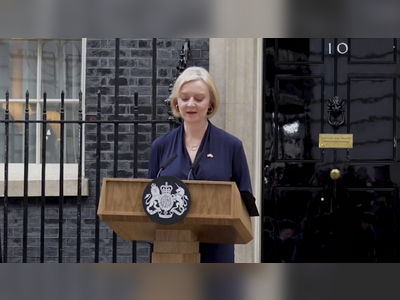UK Eyes Denmark-Style Asylum Rules in Major Migration Shift
British government plans to adopt temporary‐status refugee permits and tighter family-reunification limits modelled on Denmark’s strict asylum framework
The British government is preparing to overhaul its asylum and immigration system by taking inspiration from the approach of Denmark, where refugees receive temporary residence permits and face challenging pathways to permanent status.
This move marks a significant policy shift for the UK as it seeks to reduce irregular arrivals and tighten controls.
Under the Danish model, after sweeping reforms during the refugee wave of 2015, newly-arrived refugees are granted one- or two-year permits, with no guarantee of permanence.
To gain permanent residence, they must meet demanding conditions such as fluency in Danish and sustained full-time employment.
This change is credited with driving asylum applications in Denmark down from nearly fifteen thousand in 2014 to just over two thousand in 2024.
In the UK, the new measures—set to be announced shortly by Home Secretary Shabana Mahmood—include plans to limit automatic access to permanent status for refugees, tighten family-reunification rights, prioritise public safety over migrant rights in some legal appeals and introduce stronger integration requirements.
British officials recently travelled to Copenhagen to study the Danish policies firsthand.
Proponents argue the strategy bolsters state control of borders, addresses growing boat-crossing numbers via the English Channel and offers a more sustainable migration stance.
In the current year, more than thirty-nine thousand arrivals via small boats have already been recorded, representing an increase over 2024.
However, the Danish model has drawn criticism for creating uncertainty for refugees and complicating integration, with opponents warning that temporary status can undermine social cohesion and rights protections.
Some liberal voices in the UK fear the importation of such a model could erode Britain’s historic commitments to asylum and human rights frameworks.
Supporters nevertheless point to elements of Denmark’s approach that may be instructive—such as early access to the labour market and clear obligations on new arrivals—and believe the UK must adapt to changing demographics, labour shortages and migration pressures.
The forthcoming reforms represent one of the most significant migration policy shifts in recent UK history and reflect a government keen to reclaim control of a contentious terrain.
This move marks a significant policy shift for the UK as it seeks to reduce irregular arrivals and tighten controls.
Under the Danish model, after sweeping reforms during the refugee wave of 2015, newly-arrived refugees are granted one- or two-year permits, with no guarantee of permanence.
To gain permanent residence, they must meet demanding conditions such as fluency in Danish and sustained full-time employment.
This change is credited with driving asylum applications in Denmark down from nearly fifteen thousand in 2014 to just over two thousand in 2024.
In the UK, the new measures—set to be announced shortly by Home Secretary Shabana Mahmood—include plans to limit automatic access to permanent status for refugees, tighten family-reunification rights, prioritise public safety over migrant rights in some legal appeals and introduce stronger integration requirements.
British officials recently travelled to Copenhagen to study the Danish policies firsthand.
Proponents argue the strategy bolsters state control of borders, addresses growing boat-crossing numbers via the English Channel and offers a more sustainable migration stance.
In the current year, more than thirty-nine thousand arrivals via small boats have already been recorded, representing an increase over 2024.
However, the Danish model has drawn criticism for creating uncertainty for refugees and complicating integration, with opponents warning that temporary status can undermine social cohesion and rights protections.
Some liberal voices in the UK fear the importation of such a model could erode Britain’s historic commitments to asylum and human rights frameworks.
Supporters nevertheless point to elements of Denmark’s approach that may be instructive—such as early access to the labour market and clear obligations on new arrivals—and believe the UK must adapt to changing demographics, labour shortages and migration pressures.
The forthcoming reforms represent one of the most significant migration policy shifts in recent UK history and reflect a government keen to reclaim control of a contentious terrain.









